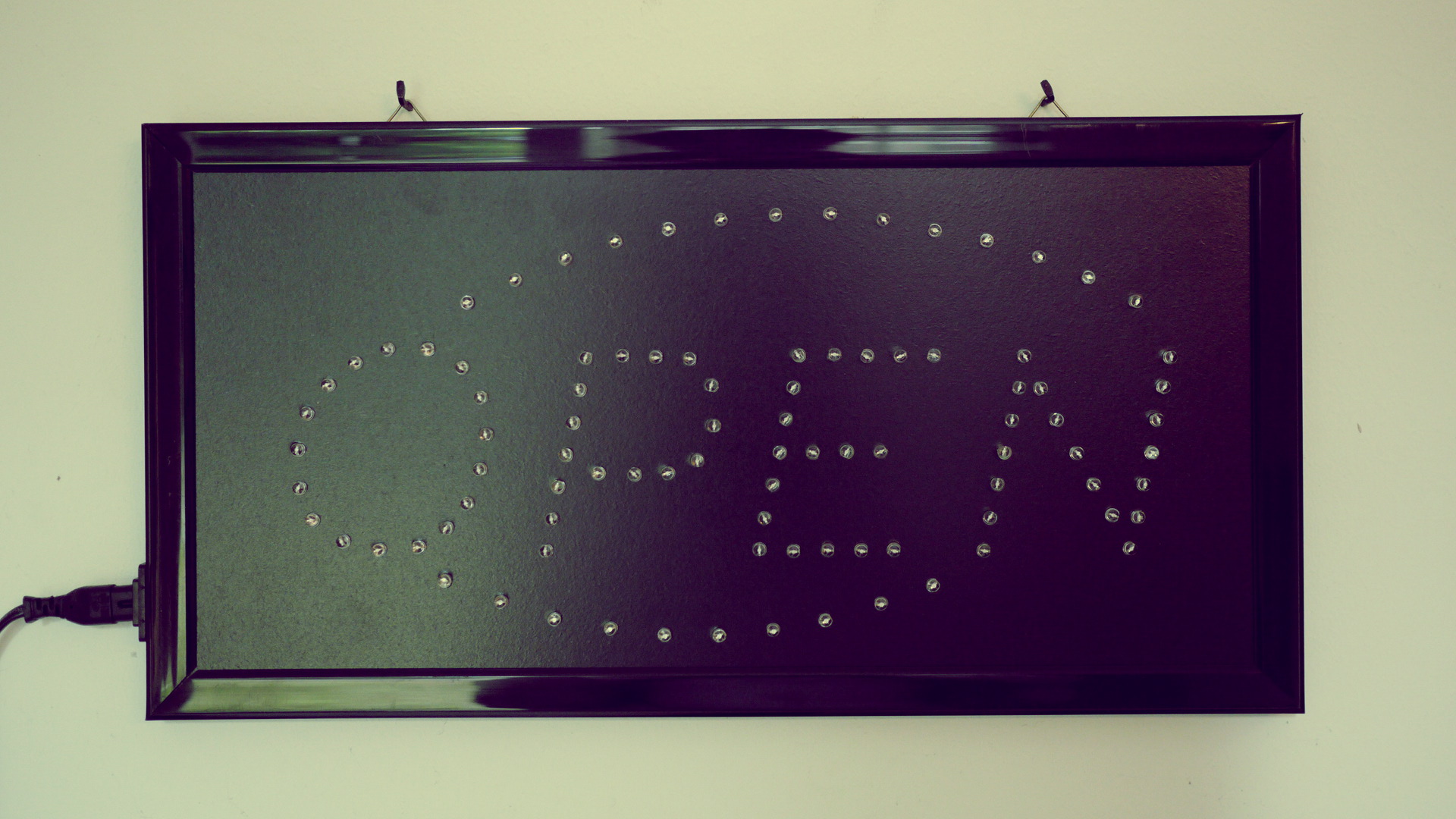
The Piet Zwart Institue Media Design Master has a long history of cracking open different media, in a practitioner sense, in order to understand the politics that inhabits them as well as understanding the economical and social context from which they emerged. We want our students to design their own probes, tools and instruments to manipulate any media and ultimately have them design their own.
Behind this approach lies the question of openness as this process of critical unpacking and reverse engineering relates to the idea of transparency and democracy. In the last decade the use of such concepts has exploded to the point where in reality the meaning of the word ‘open’ can vary greatly. Yet the positive image associated to this word overshadows entirely this obvious fact, to the point where openness can become, intentionally or not, a very effective smoke screen. After all, regardless of one’s intentions, who does not want to be perceived as being open, therefore friendly and trustworthy? Thus we should not be surprised that today openness has become highly fashionable. This does not concern just software, also hardware, design, services, relationships, companies, data, workflows, industries and even the Web. Indeed, if it’s open it must be good, and it certainly is for businesses and lawyers. So if everything is meant to be eventually open in the techno legal positivist loop, we must look beyond our intuitive understanding of this property in order to reveal the purpose and function of such open objects. We must look beyond the sexiness of participatory and remix culture, networked collaboration, novel forms of distributions.
For instance open design, besides being open, is modern alchemy. It is not focused on the transmutation of common metals into gold, but it is instead dealing with the transmutation of digital information into tangible objects. An interesting aspect of this process is the transmutation of the alchemist herself. This analogy is not innocent. Jung understood alchemy as the process of individuation of the alchemist, a process of psychological development towards the Self. Open design operates similarly as its impact goes well beyond the local production of objects pulled from a recombining library of digital models. In fact, drawn into the symbolism of direct-digital manufacturing, big data, the Net and just-in-time practices, open designers are being transmutated into the true replicable yet indefinitely customised Self: the prosumer.
Stepping out of open design for a short while, Stiegler also sees in free software a process of individuation that substitutes the duality of consummer/producer with an infrastructure made of active contributors. According to him this individuation permits the transformation and the questioning of the self, as well as it enables the sharing and responsibilty of what is made. Stiegler is warning us though that technology, more particularly digital media is a double edged sword. He uses Derrida’s ‘pharmakon’ to describe what can be both a poisoin and remedy and as such ends with a binary choice: depending how we will use this drug, we have to choose between a police state, or a contributive economy.
While this simplification fullfill any agendas to polarize our understanding of what is generally called openness, it is heavily biased by the romantic vision of the hacking culture and the fight against black boxes. As a matter of fact, at the Media Design Master we believe that the single dimension approach of black, white and grey boxes does not work anymore. For instance YouTube: depending on which angle you are looking at it, let it be social, economical or technical, the former will appear either as a close or open system, where complex agendas and narratives meet in unexpected ways.
Today most people are working in white boxes nested inside a black box and this construct could be identified as a capitalistic creative sandbox that replaces the, again, unidimensional, maybe serial mechanism of old fashionned process of creative destruction. In this situation the control and exploitation of labour, of our texts, videos, design and art is happening at a higher level, that is not perceived by its contributors and therefore allows opposing values and politics to co-exist without visible conflict.
But as the systems we belong to evolve, our methodologies evolve as well. Also, if cracking open culture is a full time job, it allows us to understand what kind of realities media are constructing and what kind of systems of belief they enable. While on the one hand at the Media Design Master we cannot teach you curiosity, on the other hand, we try to learn together, staff and students, and teach each others, conceptual and technical tools that help us, every day, to understand and contribute to the becoming of the text, sound, the still and moving image in the network society.
Originally written for the Piet Zwart Institute open day, March 24th 2012.